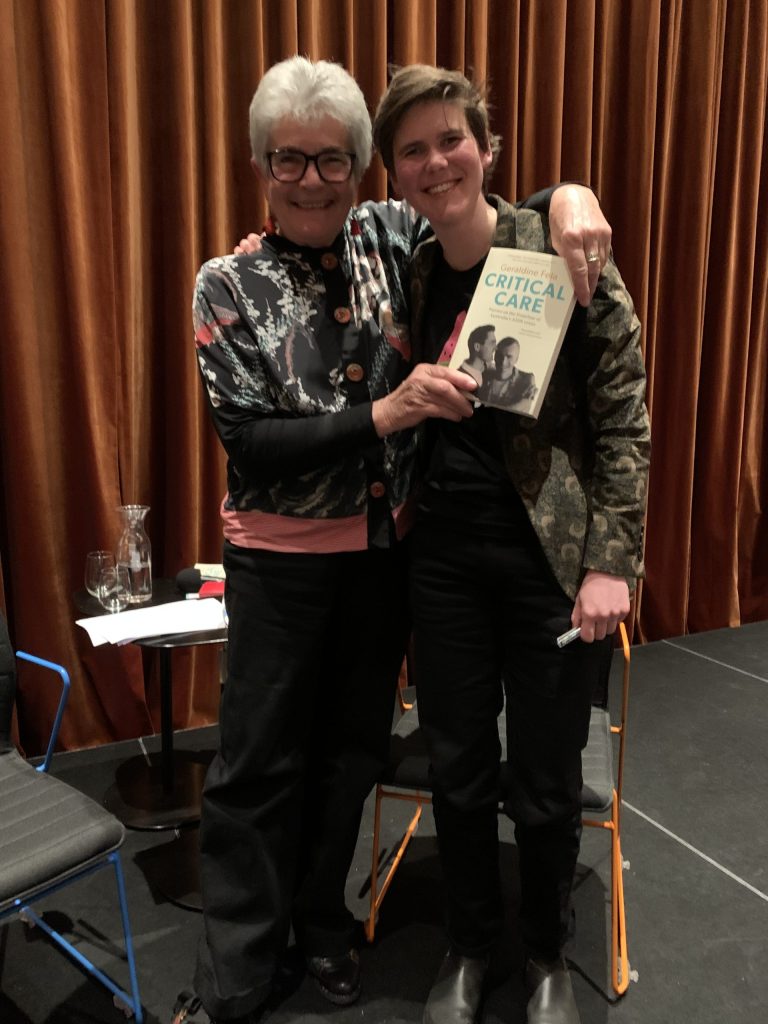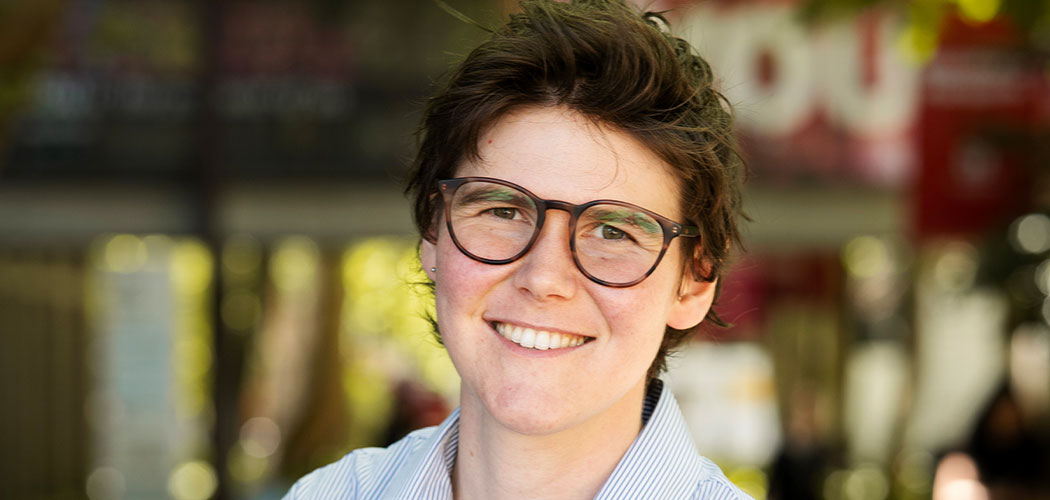A new book chronicles the role nurses played during the AIDS pandemic after the emergence of HIV, and how unions drove infection control policy, including universal precautions.
“HIV and AIDS devastated communities across Australia in the 1980s and 1990s. Bringing together stories from across the country, historian Geraldine Fela documents the extraordinary care, compassion and solidarity shown by nurses at the time.
Critical Care: Nurses on the frontline of Australia’s AIDs crisis unearths the unexamined history of nurses and unions as caregivers and political agents who helped shape Australia’s response.
“There’s not been a great deal written about nurses during that time. Community historian Paul Van Reyk wrote a short article about HIV nurses at St Vincents Hospital. This is the first sustained history of that time from the perspective of nurses,” says Fela, who isn’t a nurse but who has several family members who are.
“But also, which was important for me because I’m a proud union member, was that it’s also the story of nursing unions responding to HIV. There’s this huge, very important healthcare workforce that has been completely overlooked in the history of this health crisis. And that’s why I wanted to pursue it.”
Empowered nurses

The special challenge of coping with patients needing care, often when they were profoundly sick and dying, where no vaccine was available, and no drugs were effective, put huge pressure on nurses on the front line.
“It tells a story of the care that nurses gave people with HIV and AIDS at a time when doctors could really do very little. And part of that is the change in hospital hierarchies that occurred,” says Fela.
“Because doctors could do so little, nurses had this elevated importance in the context of AIDS care. There was also these new phenomena of patients who were young, often very political and challenging rigid hierarchies, and demanding agency over their treatment.
“Nurses supported patients in many cases and that really challenged that rigid hierarchy within those wards. The interweaving of the political and care provision is really important.”
Nurses negotiated homophobia and complex family dynamics as well as defending the rights of their patients, says Fela, who wanted to tell a national story. She interviewed 30 nurses from each state and territory in Australia across a variety of clinical settings.
“Sydney and Melbourne are really important in the story of the AIDS crisis in Australia because it was the centre of hospitalised AIDS care. But I wanted to look across the country – to community, rural and regional areas and nurses who were involved in prevention and developing health promotion campaigns.”
Australia’s AIDS crisis aroused fear, hatred and homophobia and yet new bonds of care, community and love were forged.
“People who’d worked in Sydney and Melbourne often had similar stories of being at the centre of the gay community in those wards.
There’d be drag Queens come on to the wards and do performances. The whole ward would go out for Mardi Gras, there was a kind of connection there and the wards were just full of people all the time,” says Fela.
“Then there was the nurses who worked in, for example, Perth, Tasmania, Adelaide. They often talked a lot more about the stigma and the prejudice because they were more isolated. And often in those cases, the nurses themselves experienced it. One nurse spoke about nurses asking their colleagues working with HIV patients to use a different toilet.
“I deal with that in the book; it’s not a homogeneous story in that there was some nurses who did treat patients in ways that we don’t find acceptable now. But that wasn’t the dominant story.”
Nurses and unions influencing policy
In the backdrop was the role of nurses in unions shaping infection control policy and influencing government policy and public health policy.
Key figures included then Australian Nursing Federation (ANF) Federal Secretary Marilyn Beaumont (1987-1995) pictured above left with Fela and who attended the book launch; and Bronwyn Ridgeway in NSW, who advocated at a high level to government and were in negotiations with hospitals, around universal precautions and public health policy.
While on the ground workplace delegates and ANF members were advocating for patients. There was a debate raging through the 80s and into the early 90s with the Australian Medical Association (AMA) and the Royal Australasian College of Surgeons advocating for making healthcare contingent on testing, says Fela.
In 1992, a Nurses in AIDS Care conference, organised through a working group of the ANF, passed a resolution threatening a work ban on compulsory testing if introduced.
“The wording of it was something like ‘we’re putting the medical profession on notice. We will not participate in any compulsory testing of our patients. We won’t do it.’,” applauds Fela.
Fela considers the timing was also critical, with nurse and social activism prominent, with the 1986 50-day nurses’ strike in Victoria, the transition of registered nurse education to universities, and social movements of the time such as the women’s movement and gay liberation. “For nurses who had chosen to work in those areas, it influenced how they responded.”
Other stories included nurses who just landed in the provision of HIV and AIDs care. Fela writes of RN Kathleen Duff, from Kingaroy, regional Queensland, the wife of a cattle farmer. With three older kids, she wanted to go back to work and did a retraining program in Brisbane. She just got assigned to the AIDS ward in Brisbane and thought, ‘oh, you know, I’ll give it a go’,” says Fela.
“She was just thrown into this world and was an extraordinary nurse. She just took her nursing principles to the disease.”
Comparison with COVID-19 health response
In 2020, Australia went into lockdown with the arrival of Covid-19 while Fela was halfway through writing the book. In the midst of researching infectious disease and contact tracing, she says she couldn’t help comparing the two public health responses.
“What really struck me was that during the AIDS crisis, nurses and their unions and affected communities fought for and won an approach to infection control and approach to public health in general. It empowered communities themselves to deal with the threat of infectious disease and disease spread.
“By having that collaborative bottom-up approach, trust was built and often in very marginal communities, including drug users and sex workers. And that has important health implications well beyond HIV and AIDS.
“But in COVID, the opposite was done. So much of the response was based on coercion and punishment and trust was broken down. Living through how we responded to COVID, I do think there’s a lot that we could have learned [from the AIDs response] that might have helped us.”
RRP: $49.99
To purchase the book, visit UNSW Press.
Also available at major retailers including Amazon, Dymocks, Readings, Gleebooks and Abbey’s.

Podcast
Blood, prejudice and nursing: Barry’s story [28 mins]
Fela has produced a podcast with ABC Radio National on the first known HIV positive student nurse in Australia. Barry McCluskey, a SN at Warrnambool Base Hospital, was put on compulsory sick leave in 1985. The union negotiated for his return to continue his training. Fela interviews Barry’s brother, and colleagues who talk about how nurses rallied around him and supported him to finish his training.








